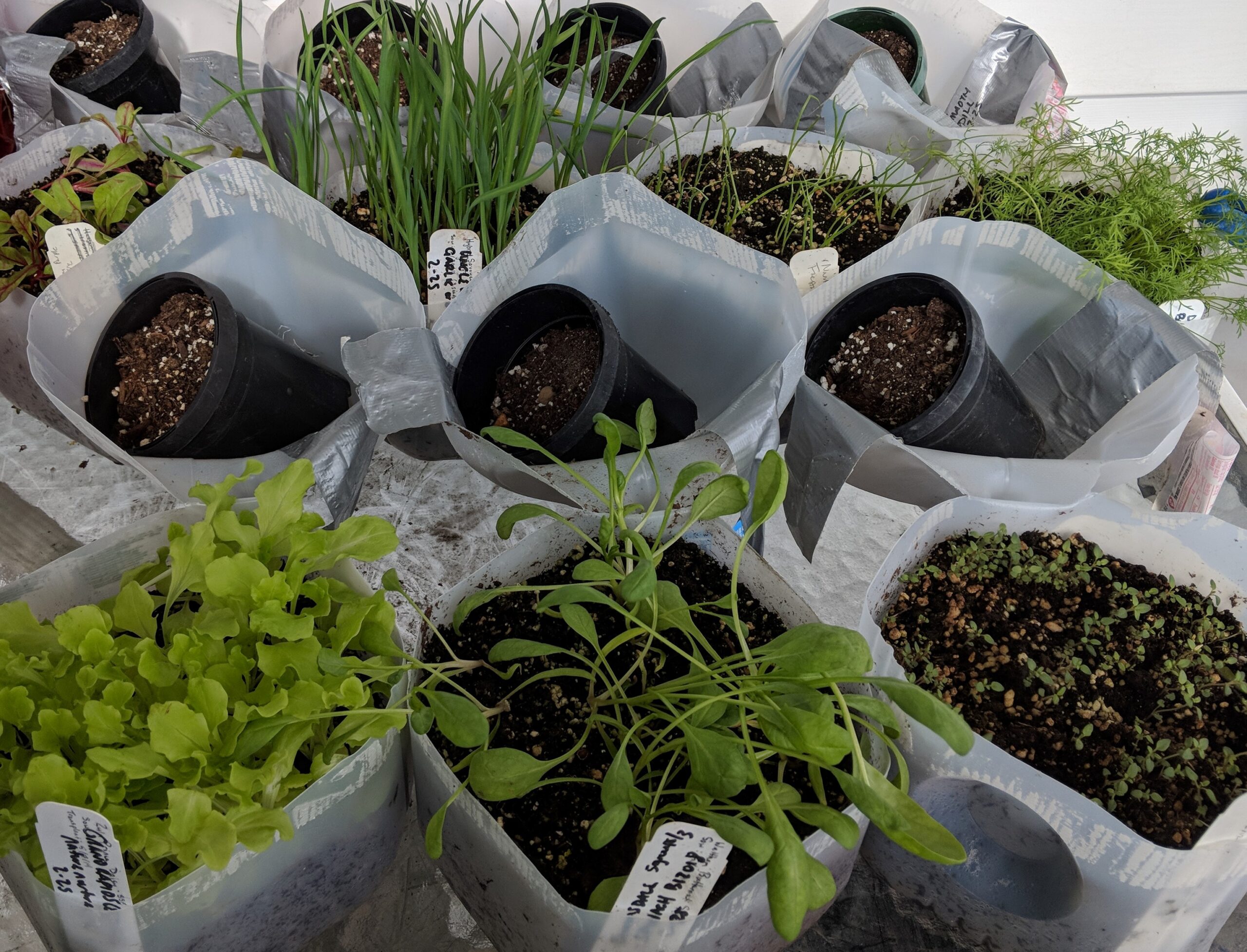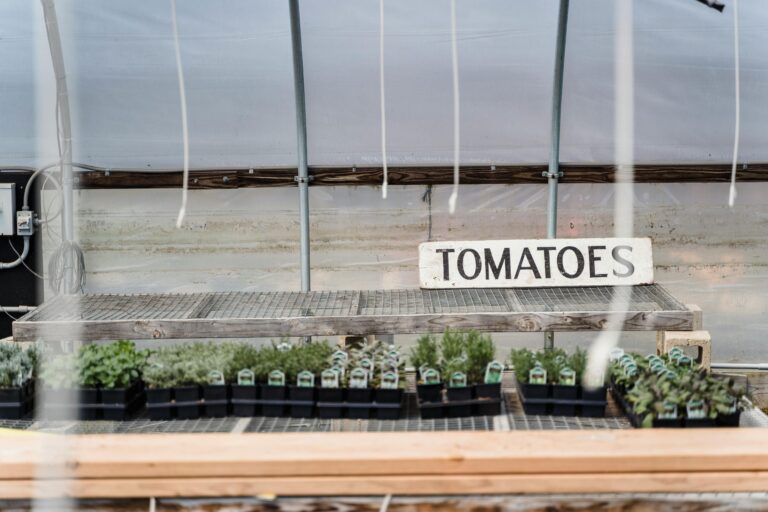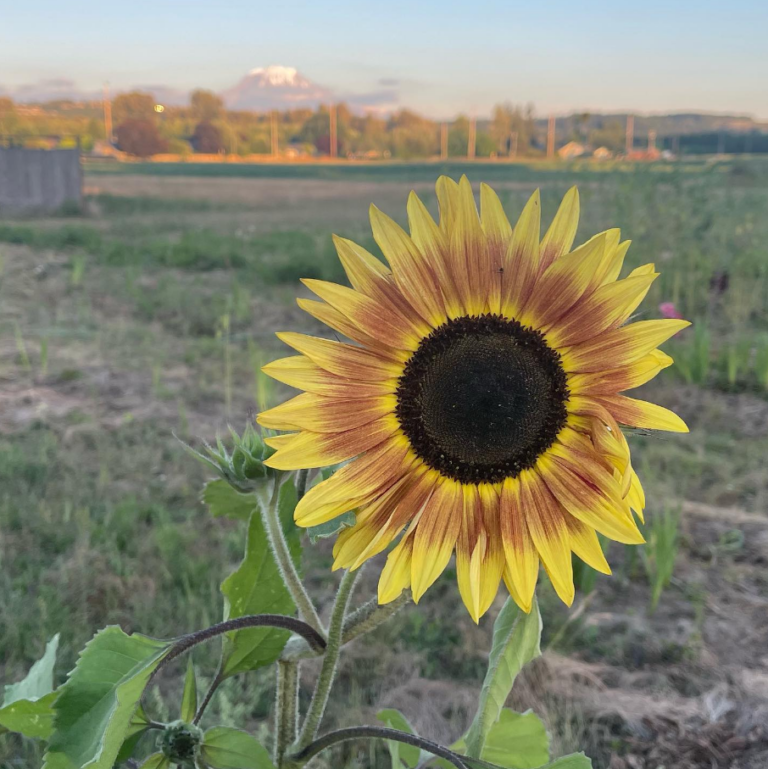Winter Sowing: Using Milk Jugs as Mini Greenhouses for Seed Starting

If you live the Pacific Northwest, you know the weather can be unpredictable. But did you know you can use the chilly winter and early spring months to start seeds outdoors without expensive grow lights or greenhouse setups? Enter the milk jug greenhouse method—a simple and effective way to start strong, healthy plants using recycled materials.
This method, often called winter sowing, is perfect for gardeners in Washington’s maritime climate. It allows seeds to germinate naturally, harden off as they grow, and produce stronger seedlings for transplanting in spring.
What You’ll Need
✔️ Milk jugs (or similar clear plastic containers) – Rinsed and with labels removed
✔️ Utility knife or scissors – To cut the jugs
✔️ Drill or screwdriver – For drainage holes
✔️ Duct tape – To secure the jugs after planting
✔️ Potting soil – A light, well-draining mix
✔️ Seeds – Cold-hardy flowers, vegetables, or herbs
✔️ Permanent marker – To label your jugs
Step-by-Step Guide
1. Prepare the Milk Jugs
Using a sharp knife or scissors, cut around the jug about 4 inches from the bottom, leaving a small section uncut to act as a hinge. This creates an easy way to open and close the mini greenhouse.
Next, poke several drainage holes in the bottom of the jug using a drill or screwdriver. This prevents water from pooling and rotting your seeds.
2. Add Soil & Plant Your Seeds
Fill the bottom half of the jug with about 3-4 inches of moist potting soil. Scatter your seeds according to the packet’s instructions—some seeds prefer a light covering of soil, while others (like lettuce) need to stay near the surface.
3. Secure & Label the Jugs
Close the jug and secure it with duct tape along the cut seam. This keeps warmth and moisture inside while allowing airflow. Use a permanent marker to label the outside with the seed type and date planted.
4. Set Outside & Let Nature Work
Place the jugs in an open, sunny location outdoors—preferably against a south-facing fence, porch, or garden bed. The jugs act as mini-greenhouses, trapping warmth during the day and insulating seedlings at night.
5. Watering & Care
Pacific Northwest winters provide enough rain to keep the soil moist, but if we get a dry spell, lightly mist the soil. If condensation builds up inside, the moisture level is just right. If not, you may need to add water.
6. Transplant in Spring
As temperatures rise (usually around late March to April in Puyallup), your seedlings will be strong and ready to transplant. Open the jugs to gradually introduce them to the elements (called hardening off), then move them into your garden beds or larger containers.
Best Seeds for Milk Jug Greenhouses
This method works especially well for:
🌱 Cold-hardy veggies – Kale, spinach, lettuce, broccoli, carrots, onions
🌸 Perennials & flowers – Lupine, black-eyed Susans, echinacea, poppies
🌿 Herbs – Parsley, thyme, oregano
Why This Works
Our mild, rainy winters and cool springs make this an ideal method for low-maintenance seed starting. Instead of babying seedlings indoors under grow lights, you let Mother Nature do the work—no fuss, no hardening off, and best of all, no extra energy costs!
Give It a Try!
If you’re looking for an easy, sustainable way to start seeds this season, grab those empty milk jugs and start winter sowing today! Your garden will thank you come spring.






